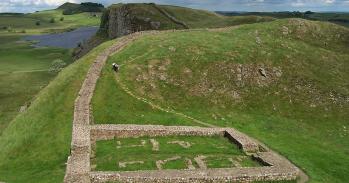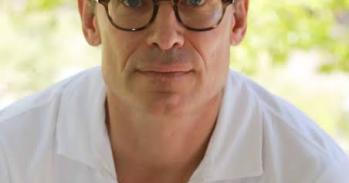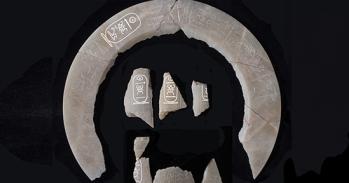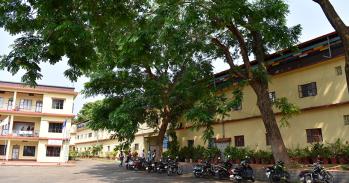
A collaborative study led by Cambridge is examining the impact on society of the destruction and reconstruction of cultural heritage.
A collaborative study led by Cambridge is examining the impact on society of the destruction and reconstruction of cultural heritage.
The CRIC research programme provides a much-needed understanding of the main characteristics of post-conflict reconstruction processes and their implications for society.
Cultural heritage is frequently damaged or destroyed during periods of war and violence. But this is not always an accidental by-product – in some cases, sites of cultural heritage have been deliberately targeted as a means of inflicting pain and societal trauma. A community’s shared sense of belonging is often rooted in its heritage sites and landscapes, giving such places particular social significance. And the impact on society doesn’t stop with the breaking down, destruction, defaming or neglecting of such sites; it continues post-conflict, through the political and psychological impacts of the decisions made during reconstruction.
The complexities of the relationship between post-conflict scenarios, heritage and identity are increasingly recognised, but with this recognition has come an awareness of how little we actually understand about its nature. What role does cultural heritage play during post-conflict reconstruction? What is the impact of reclaiming and rebuilding on people’s sense of identity? By investigating these relationships, we might learn more about how heritage can be harnessed to both personal and political agendas. On this basis, research in this area can help to guide crucial decisions by policy makers and regional practitioners regarding the reconstruction of cultural heritage.
CRIC
A four-year interdisciplinary project on Cultural Heritage and the Reconstruction of Identities after Conflict (CRIC), now midway through its research programme, aims to shed light on these issues.
Dr Marie Louise Stig Sørensen in the Department of Archaeology leads the €1.2 million project, which is funded through the European Union Seventh Framework Programme and brings together researchers in Spain, France, Sweden, Germany, Cyprus, Bosnia and the UK. Her research interests and those of her team in Cambridge – archaeologist Dr Dacia Viejo Rose and social anthropologist Dr Paola Filippucci – lie in examining the link between heritage, identity and social memory. Collectively, the project is drawing on strengths in archaeology, social anthropology, history, human geography, sociology, political sciences and psychology.
Case by case
Five case studies provide the backbone of CRIC. Each focuses on physical cultural heritage – from landscapes to monuments, churches to bridges – damaged during civil war, ethnic violence and World War. Geographically, the studies cover Spain, Bosnia, France, Cyprus and Germany, and give insight into the recovery of rural landscapes as well as urban centres or whole towns. The project covers historical scenarios that range from recent conflicts in Bosnia and Cyprus, to the planting of forest over the First World War battlefield of Verdun in France, with its muted metaphors of covering and healing.
In Bosnia and Cyprus, case studies highlight the importance of comparing processes of destruction and reconstruction. Although both are ethnic conflicts, the fate of cultural heritage within the two areas differs substantially. In Bosnia, heritage is being re-shaped, as exhibitions and monuments are given new interpretations. Different agencies have sponsored the rebuilding of religious buildings and, in the process, have altered the traditional cultural landscape. Denominations of churches have changed, new minarets have been added to mosques – all representing departures from local architectural and cultural history. In Cyprus, on the other hand, differences in the intensity of development on either side of the divided city of Nicosia have resulted in substantial variation in the preservation of traditional buildings. In the north of the city, little has changed; yet in the south, old buildings have either been replaced by modern development or have seen changes in use.
The case studies also illustrate different types of urban reconstruction projects, with Dresden in Germany exemplifying the faithful, apparently accurate, reconstruction of selected parts of the city centre, bombed during the Second World War, within an otherwise much-modernised city. In Spain, reconstruction of the Basque town of Gernika, bombed in the Spanish Civil War, exemplifies Franco’s architectural vision of the ‘New’ Spain. This vision was based on an idealised version of historic Spain and brought together several architectural forms and elements to be used throughout the country in its reconstruction.
In all, the CRIC project looks back over almost a century of European history. Each study has been designed to track the sequences of historical events that led to the destruction of cultural heritage, to investigate what effect this has had on communities and their sense of identity, and to identify how different perceptions of the event emerge and are affected by the form of the reconstruction. This makes it possible to trace specific examples of reconstruction as they unfold, pinpointing similarities and differences among them.
Memorials and meaning
When efforts are made to reconstruct cultural heritage, a new fabric of meaning and memory can be woven into the result. The findings of the research project are helping to identify what factors are important for understanding the impact of reconstruction, including how they can change the way that events are perceived, or can even become yet another means of conflict.
One thread of the research has therefore been the recording and analysis of anniversary events, both archival and current. This has demonstrated how the staging of memorials can manipulate the manner in which past events are remembered and what they are used for. A reconstruction of the sequence of commemoration events that have happened on 13th February, the anniversary of the 1945 bombing of Dresden, include those under the communist regime and following the recent appearance of neo-fascist groups. This reconstruction has shown how, even from very early on, the memorial events involved both those who mourned and those who used the anniversary for political ends.
In Gernika, the 26th April anniversary of the 1937 bombing first became a public event after the death of Franco. The project has traced the acceleration in the anniversary’s international status, and the tensions and competition for control between local groups and regional government, as well as between the church and secular groups. Even recently established anniversary events, such as those at the Srebrenica memorial site in Bosnia and Herzegovina, appear far from uncomplicated, as some groups see the anniversary as a provocation or a reminder, whereas others see it as an opportunity to mourn and simultaneously express rights.
Anniversary events are only part of the equation. CRIC research shows that contributing to the complex mix are also such factors as the role of national and international communities involved in reconstruction, and how memories are transmitted from one generation to the next. Symbols too play an important role, both at the mundane level of mass culture and as part of public rituals. This is seen for example in Gernika, where the traditional symbol of the oak tree represents the historic civil liberties bestowed on the region since the Medieval period. The current tree – propagated through generations – still stands on the same spot, but the symbol also appears today in many other contexts such as advertisements.
Societal impact
The CRIC research programme provides a much-needed understanding of the main characteristics of post-conflict reconstruction processes and their implications for society. Not only does this help us to understand how we behave socially and culturally, but it is also highly relevant to policy makers and organisations invol
ved with reconstruction efforts. Too often, despite the best intentions, reconstruction efforts have been found to prolong conflicts and tensions simply because their impacts are not properly understood.
For more information, please contact the author Dr Marie Louise Stig Sørensen (mlss@cam.ac.uk) at the Department of Archaeology, or Ben Davenport, CRIC Administrator (bkd20@cam.ac.uk) or visit www.cric.arch.cam.ac.uk/). Images collected as part of the CRIC project are stored at DSpace (www.dspace.cam.ac.uk/), the institutional repository of the University of Cambridge.
This work is licensed under a Creative Commons Licence. If you use this content on your site please link back to this page.





